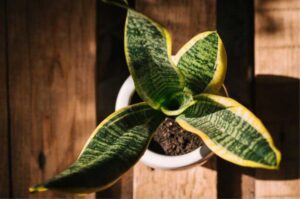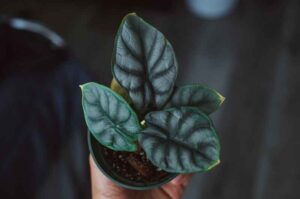How Fast Do Ponytail Palms Grow? (Answered)
Ponytail palms (Beaucarnea recurvata), a native of Central America, are commonly called bottle palms or elephant palms. But they are not true palms but rather succulents. It’s an easy-care plant, the same as a snake plant, and doesn’t require much attention.
The growth of the Ponytail Palm is relatively slower as compared to other houseplants. They grow around twelve inches in a year. And, they may take up to five or more years to double their size. For example, a 2 feet tall plant takes 5-6years to grow up to 4 feet.

Growth rate and size of Ponytail palms
- The larger plants you grow outside have a large bulbous base that keeps increasing in size as the plant grows.
- But their growth rate is relatively slow, not more than 12 inches in a year.
- On average, a mature plant has a height of approximately 12 to 18 feet
- They can reach a height of 15 to 30 inches in tropical regions.
- But as indoor plants, they never grow more than 5 feet tall.
How to Make Your Ponytail palms Grow faster?
Ponytail palms don’t seek much attention and are thus low-maintenance plants. They thrive well in hot climates and prefer sandy soil. However, there are specific points to keep in mind while growing the Ponytail palms:
Don’t overwater
The plant stores excess water in its bulbous base, so it’s essential to treat it as succulent. Therefore do not overwater; instead, wait for the soil to dry completely between consecutive watering. In winters, reduce the number of times you water the plant.
Don’t underwater
When your palms are exposed to arid conditions, their stem may shrink due to lack of water. But do not fret, water them routinely, and they will fill out upon absorbing moisture.
Don’t overfeed
Talking about fertilizers, don’t overfeed them with solid doses of fertilizer. Instead, give them one single dose of houseplant fertilizer. Remember to dilute the strength to half before feeding the plant.
Also, it is advisable to fertilize the plants exclusively in the early spring season. It is because they experience maximum growth in the spring.
Look out for pests and diseases
Pest and disease are Common issues of every plant. It’s up to the caretakers to keep checking for pests. Spider mites love to attack the palms. So look out for them, and if the plant is infested, you can disinfect the plant by washing it with equal parts of water and alcohol.
What conditions are best for growing a Ponytail palm?
They enjoy bright but indirect sunlight. So choose a spot that gets a minimum of eight hours of good sunlight. However, some plants may thrive in low sunlight as well. Remember not to overexpose the plant to direct sun; else, the leaves may burn out.
Being a desert plant, they can withstand a wider range of temperatures from 40°-90°F during summers, gradually moving in the bright sun, so it gets a chance to soak itself in the sun.
How to pot and re-pot the plant to ensure healthy and faster growth?
For potting, use terracotta or clay pots that allow maximum water evaporation. The size of the pot determines the size of your plant.
For growing a larger plant, you will need a big pot. And if you want the exact size of the plant, simply repot it in the same pot size with fresh soil.
It is advisable to repot your plant in springs or early summers; it’s the plant’s growing season.
How long will my Ponytail palm survive?
Well, you don’t have to worry about your plant dying early. They are known to survive for decades. Sometimes they may outlive you to survive for more than 100 years.
How to prune my Ponytail palms?
Frequent pruning is a big ‘no’ for these plants because you’ll end up damaging the plant. However, you can prune the tips of the damaged leaves, allowing space for new tissues to grow.
Moreover, you can also prune the secondary shoots that their offsets send up. But if you are looking forward to growing multiple trunks on your Ponytail palm, you’ll have to keep these shoots.
Uses
- Primarily used as desktop/tabletop plants.
- They come under the category of accent plants due to their unique appearance.
- They are also used in dish gardens.
- Find use as bonsais (ornamental plants)
Conclusion
Ponytail palms are unique and adorable species that you can quickly grow indoors and outdoors. Given appropriate light and proper time, a small tabletop plant can develop into specimen plants with a height of 6 feet or more.
Though you can plant it throughout the year, springs are the perfect time for faster growth. But you have to be very patient with the growth of this plant; you cannot expect it to develop into corner specimens within one or two growing seasons.






